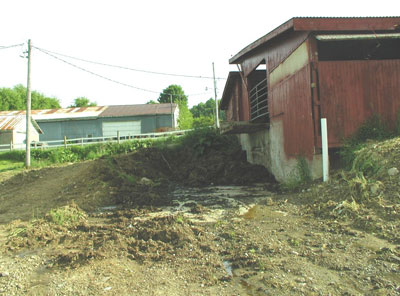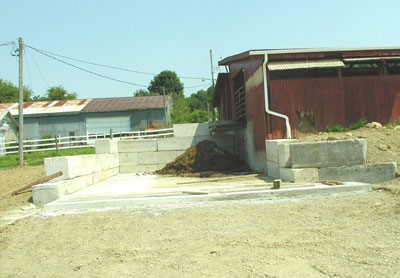Waste Storage Facilities
There is usually a need on the farm for a place to temporarily store waste material before it is composted or spread. The amount of difficulty to retain and remove waste depends on the type of temporary waste storage facility that is present. Poor waste storage areas can increase water pollution, erosion, odor, and make removing waste challenging.

BEFORE: This manure facility makes removing waste difficult and is releasing contaminated water.
How is it addressed?
There are numerous models and sizes of waste storage facilities available for farmers depending on your specific situation. Types of waste storage facilities include:
- Roofed or open stacking
- Above-ground or in-ground tanks
- Earthen or lined ponds
- Containment under livestock confinement

AFTER: This staking pad makes manure removal easy and the curb at the end of the pad reduces the amount of contaminated water released.
Approximate Cost = $1.00 per cubic foot
The result is:
- Improved water quality
- Improved herd health
- Easier access of manure for crop use
- Improved aesthetics

